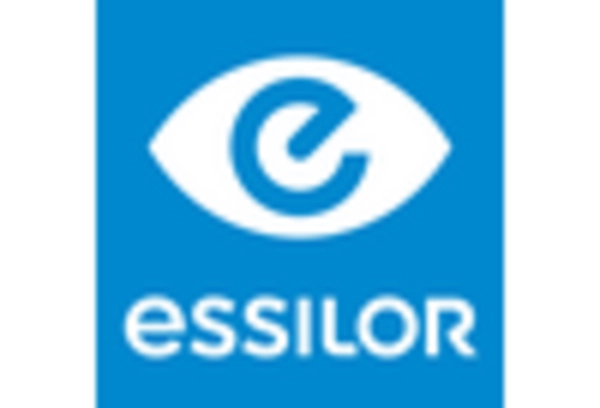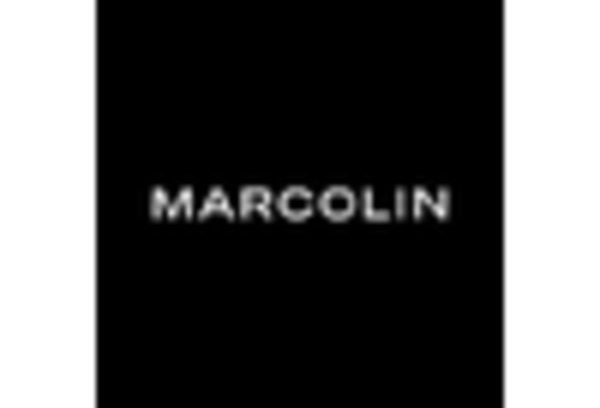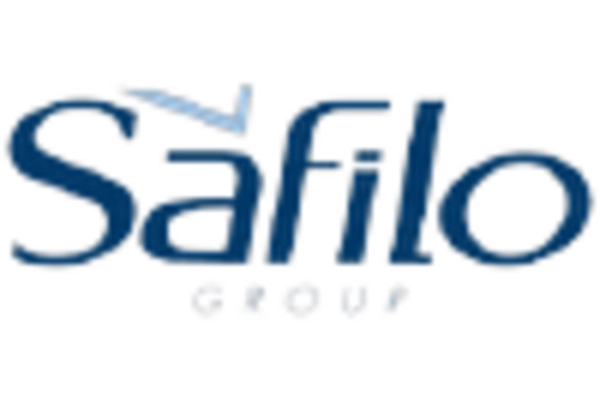Fashion and Lifestyle Trends
The eyewear market is significantly influenced by evolving fashion and lifestyle trends in the US. Eyewear has transitioned from a mere functional accessory to a fashion statement, with consumers increasingly seeking stylish frames that reflect their personal identity. The rise of social media platforms has amplified this trend, as influencers and celebrities showcase various eyewear styles, leading to heightened consumer interest. In 2025, the eyewear market is projected to reach a valuation of approximately $40 billion, with a substantial portion attributed to fashion-forward designs. This shift towards fashionable eyewear encourages brands to innovate and diversify their offerings, catering to a broader audience. As consumers prioritize aesthetics alongside functionality, the eyewear market is likely to witness sustained growth driven by the intersection of fashion and vision correction.
Rising Vision Impairment Rates
The increasing prevalence of vision impairment in the US is a notable driver for the eyewear market. According to recent data, approximately 12 million individuals aged 40 and older experience vision impairment, which translates to a growing demand for corrective eyewear. This trend is likely to continue as the population ages, with projections indicating that by 2030, the number of older adults will reach 73 million. Consequently, the eyewear market is expected to expand as more consumers seek solutions for vision correction, including prescription glasses and contact lenses. The need for specialized eyewear, such as bifocals and progressive lenses, further emphasizes the importance of addressing vision impairment in the market. As awareness of eye health increases, consumers are more inclined to invest in quality eyewear, thereby driving growth in the eyewear market.
Increased Awareness of Eye Health
Growing awareness of eye health among consumers is a pivotal driver for the eyewear market. Educational campaigns and initiatives by health organizations have highlighted the importance of regular eye examinations and the role of eyewear in maintaining optimal vision. As individuals become more conscious of their eye health, there is a corresponding increase in demand for prescription eyewear and protective lenses. In 2025, it is estimated that around 60% of adults will prioritize eye health, leading to a surge in eyewear purchases. This trend is further supported by advancements in lens technology, such as blue light blocking and anti-reflective coatings, which appeal to health-conscious consumers. The eyewear market is thus positioned to benefit from this heightened focus on eye care, as consumers seek products that enhance both vision and overall well-being.
E-commerce Growth and Accessibility
The rapid expansion of e-commerce platforms is a significant driver for the eyewear market in the US. Online shopping has transformed the way consumers purchase eyewear, providing greater accessibility and convenience. In 2025, it is estimated that online sales will account for over 30% of total eyewear sales, as consumers increasingly prefer the ease of browsing and purchasing from home. This shift has prompted traditional retailers to enhance their online presence and offer virtual try-on features, further bridging the gap between physical and digital shopping experiences. The eyewear market is benefiting from this trend, as consumers can explore a wider range of styles and brands online. Additionally, competitive pricing and promotions available through e-commerce platforms are likely to attract price-sensitive consumers, contributing to the overall growth of the eyewear market.
Technological Advancements in Eyewear
Technological innovations are reshaping the eyewear market, offering consumers enhanced functionality and convenience. The integration of smart technology into eyewear, such as augmented reality (AR) and smart lenses, is gaining traction among tech-savvy consumers. These advancements not only improve the user experience but also create new market segments within the eyewear industry. For instance, smart glasses equipped with features like voice control and fitness tracking are becoming increasingly popular. In 2025, the market for smart eyewear is projected to grow by over 25%, reflecting the demand for multifunctional products. As technology continues to evolve, the eyewear market is likely to see a surge in innovative offerings that cater to the needs of modern consumers, thereby driving overall market growth.

















Leave a Comment